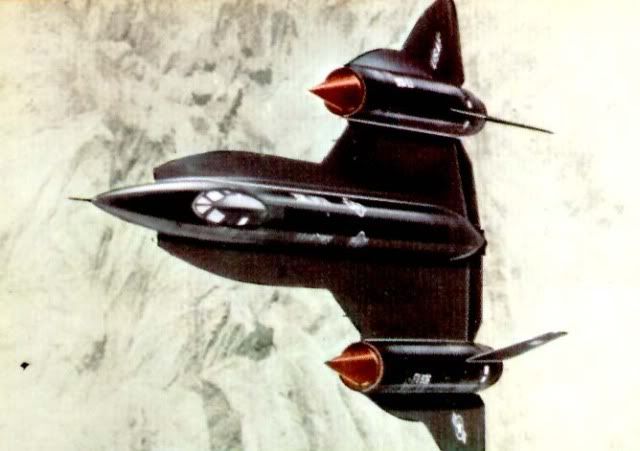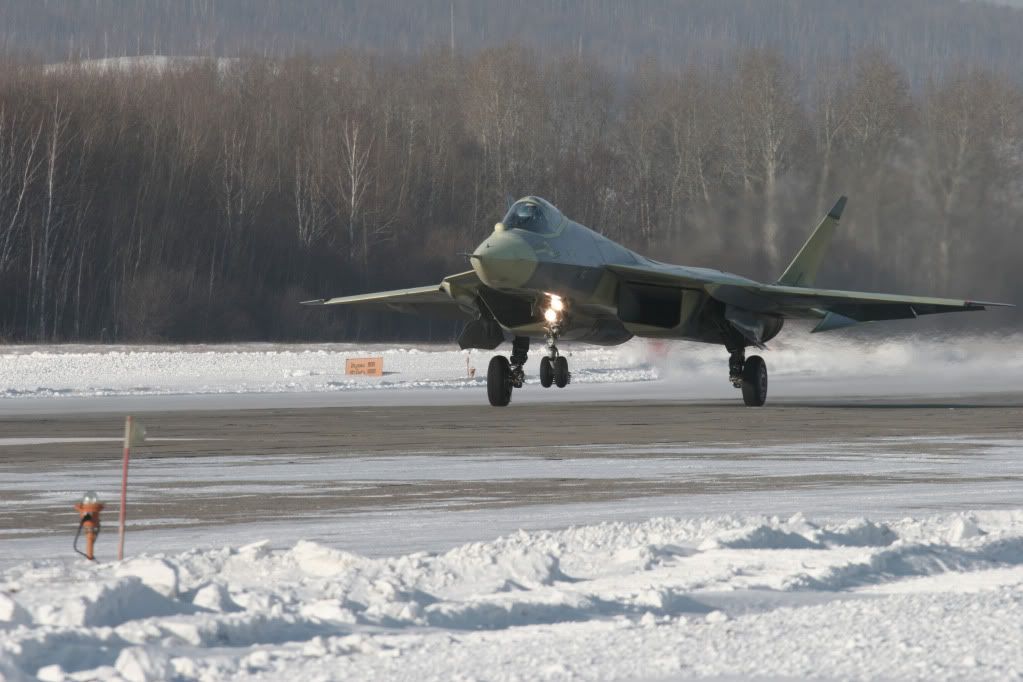As usually, I am late, my dear Gentlemen, but as always – better late than never! 
Yes, my dear Mr. Pdf 27, I completely do agree with you, although I have to confess that, unlike you, I am almost constantly disappointed since that hard personal blow I suffered back there in 1972, when I had finally figured out that my personal flying dream-machine, my own flyable goddess, the one and only Lockheed YF-12 A was suffocated by those incompetent Washington bureaucrats.

Lockheed YF 12A
I’m sure you know that this old birdie was produced by some old-fashioned engineering perfectionists from the MIT and Caltech. You know… those egg-headed guys with spectacles, which were absolutely convinced that the best way for achievement of aerial superiority is the pure engineering excellence, summarized in those popular verses that were sung during those pleasant off-job hours on the front swing at the Edwards AFB:
[i]Straighten up and fly right,
Straighten up and stay right
Straighten up and fly right
Cool down, papa, don’t you blow your top!
Ain’t no use in divin’,
What’s the use of jivin’?
Straighten up and fly yours best
Cool down, papa, and the Bastard will do the rest![/i]
Oh, yes… those were the days! My god, and a quantity of insufficiently informed people are still blabbering today about certain modern look-down/shoot-down capabilities… :rolleyes:
As always, the main problem was the coursed money – the fact that from the days of the Wright brothers through the present day aircraft costs have been increasing by a factor of four every ten years or so. Viewing that inexorable trend in relation to defense-budget, the former undersecretary of the Army, Mr. Norman Ralph Augustine, made a very disturbing prediction back there in 1980: “In the year 2054 the entire defence budget will purchase just one tactical aircraft. This aircraft will have to be shared between the Air Force and Navy three and a half days each per week.”
Levity aside, he - alas - spoke the truth about costs. The trend is absolutely real. And although engineering knowledge is increasing with almost bewildering speed, the saddest thing is that - essentially - any level of performance can be designed into an airplane system, if and only if you have somebody willing to pay the cost. The only problem is that the will is constantly diminishing too. 
But that is not our biggest problem in this story of good and bad engineering, my dear Mr. Pdf 27. Much more serious problem is our constant disregard of rational analysis. You see, despite of its success in the first Gulf War, in which the F-117A was celebrated in almost every way for being able to completely paralyze air defense systems during the opening stages of the conflict, its reputation definitely died in 1999 when an underpaid and underprivileged bunch of Serbian AA buffs shot one down with a vintage Russian radar which was introduced 11 years before the maiden flight of that CNN and Discovery channel celebrity.
Yes, my dear Mr. Pdf 27 – the main problem actually was the verity that aforementioned birdie was designed and built quickly and unscientifically, because commercialization of the engineering science for cheap and quick gains was and – alas – still is very attractive. Furthermore - even well-rewarding. Not like in the old-school epoch. You know, those products of the Old Engineering School still are with us. For example the Boeing B 52. It is still flying in this very moment. Good old McDonnel-Douglas F-4 Phantom II as well. Not even to mention the Convair F 106 Delta Dart. It was in active use 38 years after its introduction. And you know why? Because in those ancient times ideals of engineering honesty were so high that engineers never walked the streets only to “get the bloody job.”
The patchwork-engineering was and still is celebrated today as an epitome of the constructive ingenuity, and it seems to me that everything somehow started in early with that stealth celebrity in early eighties, which represented the epitome of the shortsighted development strategy. Yes, I know – it is a pretty harsh statement. But, unfortunately, I still do remember those offers for a new player at the strategic hide-and seek game in mid-seventies. They were better. For example, this was Grumman’s suggestion for a Mach 2 + bomber/fighter aircraft back there in 1978:

Invisible Penetrator – Mach 2 + stealth attacker, Grumman Aerospace Corporation, 1978
The same celebrated principles which are in use today are already present here, my dear Mr. Pdf 27: a minimal cross-section fuselage, curved surfaces for signal deflection, air-intakes shielded by the fuselage and composite materials with non-reflective coating. To foil infrared sensors: shielded exhausts above the wing. That was the work of the Old School. But it was unacceptably expensive for the Department of the Treasury.
And so, patchwork-design was accepted as the best solution for a highly specialized warplane. The navigation system of the F 117 came from the B-52. The engines were borrowed from the F/A-18. The F-16 contributed the computers and flight control system, and the biggest cockpit display was from the P-3 Orion. The tailpipes were lined with ceramic bricks made from the same quartz-like material used on the Space Shuttle, with all those known problems as well. For example, each tile had to be cemented in place individually, and the seams between them were filled with a putty-like material. Even a small gap could act like a tiny inlet, channeling the already blazing exhaust gas and heating it enough that it would burn through to the metal underneath. But quick solutions were desired. Just like today…
Yes, my dear Mr. Pdf – technology is improved, but the mental naivety that someone can come up with a cheap substitute to meet every technological and tactical threat is still perfectly vivid. Faced with the task of building a tactical stealth attack aircraft that would cost less than the big, completely specialized one, modern planners came up yet again with the old and youthful concept called “day one stealth”. What is the essence of that proposal? For the first missions of the war against an inferior enemy, JSF will be a sufficiently stealthy airplane with a limited offensive load - just like the F-117 - but once the enemy’s defenses are destroyed, it will be loaded with external weapons like the older fighters, and voilà – everything will be just fine and sufficiently cheap as well.
The only problem is, as the lesson from Serbia demonstrated, that aforementioned concept will be unattainable against an determined and sufficiently equipped enemy for two main reasons. Firstly, the air defenses will be not inclined to get killed on the first night, so they will sacrifice their lethality for their long-term survivability, thus preserving their capability to constantly stalk attackers for a protracted amount of time. The second one is much more important. Application of non-standard, innovative target detection and acquisition methodology will be able to completely revolutionize the antiaircraft defenses and to bury the whole concept of the cheap Police-Stealth Aircraft.
You know, my dear Mr. Pdf 27, the main problem with soldiers is that, generally, even today they are not trained to think like physicists or mathematicians. Ask them, for example, what they do know about some old pieces of astrophysical equipment called bolometers. Quite astonishing devices, which were sensitive enough back there in 1957 to measure temperature differences in the sky with an accuracy of 10 millionths of a degree of centigrade. Yes – back there in late fifties those devices were capable to measure and to indicate local temperature inconsistencies in the atmosphere caused by a breath from a newborn at 500 meters. With the old, nowadays completely phased-out, but still available Stebbins-Whitford type of bolometer with a liquid helium-cooled niobium-nitride core. You know, if equipped with some specialized optical devices of the Schmidt-Cassegrain type, those old, completely passive and undetectable appliances will be able to detect those supercrusing miracles, which always will suffer from a slightly more intensified air-friction…
Some completely irresponsible students at the Astrophysical observatory of Belgrade actually tried to achieve something very similar like that back there in 1999, but their efforts were abandoned after the ceasefire, which, they were told, will last. They had some other ideas too, so they abandoned that one they had – to hell with the past. As far as I know, two of them are in the USA right now. One of them is finishing his PhD, so his own story will be available after his marriage. 
BTW: he is going to marry a girl from Texas. You know… no matter how tough things get, she’s tougher. 
Well, that’s all for today. In the meantime, as always – all the best. 















